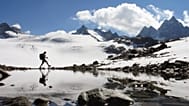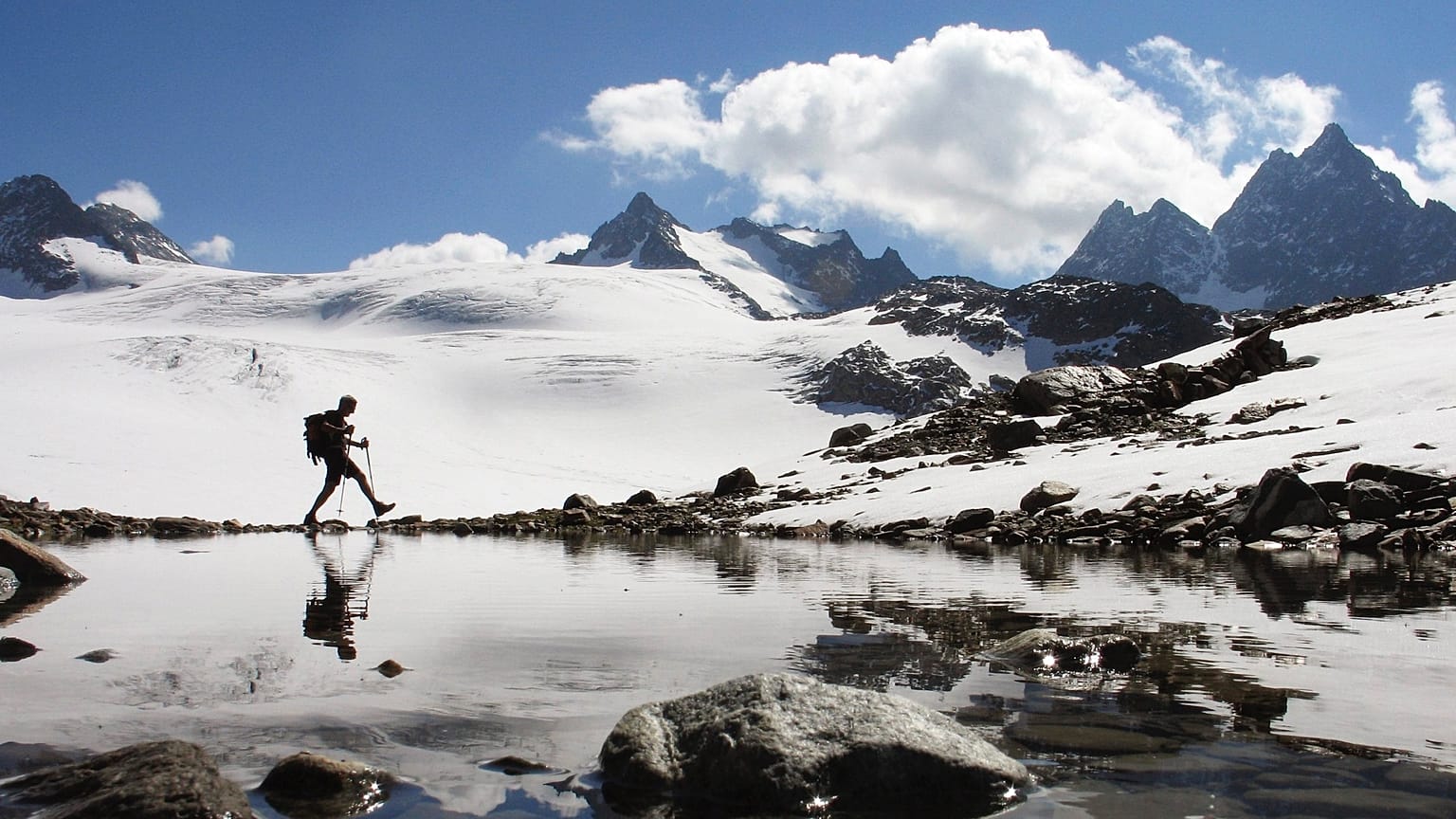Scientists warn accelerating climate change in mountain regions is increasing the risk of "devastating" floods and hazardous events.
Climate change is hitting mountain regions around the world “more intensely” than lowland areas, putting billions of people at risk.
A major analysis from the University of Portsmouth has revealed how temperature, rainfall and snowfall patterns are shifting at an “accelerated rate” in regions such as the Rocky Mountains, the Alps, the Andes and the Tibetan Plateau.
Not only does this threaten more than one billion people who currently depend on mountain snow and glaciers for water, but it also increases the risk of “devastating floods” and species loss.
Climate change in the mountains
Published in Nature, the study examines “elevation-dependent climate change” (EDCC), which is where environmental changes can speed up at higher altitudes.
It found that between 1980 and 2020, mountain regions on average have warmed 0.21°C per century faster than surrounding lowlands.
Mountains are also experiencing more unpredictable rainfall and a “significant change” from snow to rain.
“Mountains share many characteristics with Arctic regions and are experiencing similarly rapid changes,” says the study’s lead author, Dr Nick Pepin.
“This is because both environments are losing snow and ice rapidly and are seeing profound changes in ecosystems. What’s less well known is that as you go higher into the mountains, the rate of climate change can become even more intense.”
‘Devastating’ consequences
Researchers warn that the consequences of this phenomenon extend “far beyond” those living in mountain communities.
Currently, over one billion people worldwide depend on mountain snow and glaciers for water, including the world’s largest countries by population, China and India, which both receive water from the Himalayas.
As Himalayan ice decreases rapidly, the risk of “devastating” floods will also increase. Scientists warn that hazardous events will become “more extreme”.
This year, flash floods swept across Pakistan, located in the westernmost part of the mountain range, killing more than 1,000 people and affecting almost seven million.
Increased temperatures are also causing trees and animals to move higher up in the mountains, but eventually they’ll run out of land and be “pushed off the top”.
“With nowhere left to go, species may be lost and ecosystems fundamentally changed,” adds Dr Pepin.
The latest review builds on the research team’s 2015 paper, which identified key drivers of mountain climate change. This includes the loss of snow and ice, increased atmospheric moisture and aerosol pollutants.
A decade later, and Dr Pepin argues these fundamental problems remain. “We can’t just tackle mountain climate change independently of the broader issue of climate change,” he explains.
Shrinking glaciers
In Switzerland, glaciers are facing “enormous” melting this year with a three per cent drop in total volume, the fourth-largest annual drop on record.
The shrinkage this year means that ice mass in Switzerland — home to the most glaciers in Europe — has declined by one-quarter over the last decade.
“Glaciers are clearly retreating because of anthropogenic global warming,” said Matthias Huss, the head of GLAMOS, referring to climate change caused by human activity.
Swiss authorities have been on heightened alert for such changes after a huge mass of rock and ice from a glacier thundered down a mountainside that covered nearly all of the southern village of Blatten in May. A 64-year-old shepherd died in the disaster and the village was destroyed.
A major obstacle
The scarcity of weather observations in mountain regions presents a major obstacle for obtaining data - meaning researchers may be underestimating how quickly temperatures are rising.
Most current models can only track changes every few kilometres, but the study warns that conditions can vary “dramatically” between slopes just metres apart.
Dr Emily Potter from the University of Sheffield says it’s therefore imperative that we see urgent action on climate commitments and "significantly improved monitoring infrastructure in these vulnerable mountain regions.”


















